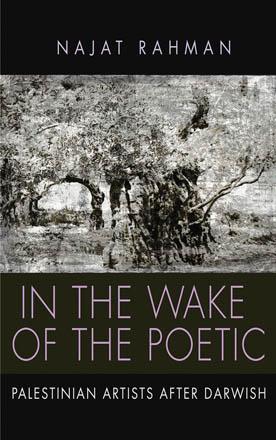You are here
Truths which cannot be proven
By Sally Bland - May 06,2018 - Last updated at May 06,2018

In the Light of What We Know
Zia Haider Rahman
New York: Picador, 2015
Pp. 497
Irony, contrasts and paradoxes rule in Zia Haider Rahman’s ambitious first novel, “In the Light of What We Know”. While the book’s style resembles an old-fashioned novel with gracefully rounded sentences and detailed descriptions and dialogues, the subject matter is very contemporary: upheavals from 9/11 and the Afghanistan War to the 2008 financial crisis, which destroyed and upended so many lives.
The story is structured as an extended conversation conducted over months between two men, old friends from when both studied mathematics at Oxford, who are now approaching middle age. In 2008, Zafar shows up unexpectedly at the narrator’s home in South Kensington, in a rather sorry state, but bent on recounting his life experiences. The narrator is eager to listen and record Zafar’s story, and has the necessary time, as he too is facing a critical lull in both his professional and personal life.
Zafar’s account of what he has been doing in the intervening years since they last met is fascinating. Like the narrator, he has worked in finance, but he also studied law and involved himself in human rights issues and fighting corruption. He has travelled between Britain, the US, Afghanistan, Pakistan and Bangladesh. Yet, the heart of his narrative is half lament and half rage at not belonging anywhere, despite all his credentials and efforts. It is also a repudiation of the state of the world with the prevailing wars, injustice, ignorance and economic instability, though he did not set out to challenge the status quo.
Rahman has created two characters who vividly exemplify one side of globalisation, where thousands, if not millions, of people lead lives that span more than one country and continent. Rahman is extremely adept at describing the long-term legacy of colonialism which is visited not only on its subjects but on their descendants in the post-colonial age. Also exceptional is his ability to reveal the subtle and not-so-subtle ramifications of class, which are portrayed as being even more influential than ethnic or national origin. This starts with the contrast between the narrator and Zafar and extends to almost every incident in both their lives.
The narrator has a privileged background, with Pakistani-origin parents well positioned in US and British academia, which afforded him a top-notch education. “Zafar, however, arrived in Oxford in 1987 with a peculiar education, largely cobbled together by his own efforts, having been bored, when not bullied, out of one school after another.” (p. 5)
Raised in the aftermath of the 1971 Bangladesh War, by parents of limited education and compassion, he transitioned between Britain and rural Bangladesh. Though attaining a degree at Oxford and later respectable jobs, he is stymied by his inability to be accepted for who he is or to have a meaningful, stable relationship with his English girlfriend.
Zafar is perhaps the most brilliant of the two men, and his alienation is the most overt, traumatic and existential. In the narrator’s words, Zafar’s story is “the story of the breaking of nations, war in the twenty-first century, marriage into the English aristocracy, and the mathematics of love”. (p. 4)
Alongside the belonging/estrangement paradigm, the other great theme in the novel is the search for truth. The two friends discuss almost everything under the sun from religion to literature, love, sex, science and philosophy, but a substantial portion of their conversations is devoted to their common love for mathematical theories, which the author quite creatively connects to the personal theme. “For Zafar, mathematics was always about the journey and not the destination, the proof of the theorem, not merely its statement... I think that in the journey, Zafar found a home in mathematics, a sense of belonging, at least for a while; it is a world without borders, without time, in which everything exists everywhere forever, and I see now what power such a thing might have over the psyche of someone so rootless”. (pp. 161-2)
Tellingly, Zafar found not only truth, but beauty in mathematics. In his opinion, the most beautiful was Godel’s Incompleteness Theorem, which states: “Within any given system, there are claims which are true but which cannot be proven to be true”. The narrator adds, “So simple. In its implications, it is a shocking theorem… the world was foolish to ignore it in an age of dogma”. (p. 11)
The Incompleteness Theorem, which implies that “the farthest reaches of what we can ever know fall short of the limits of what is true” (p. 10), ties in to the novel’s title and to the many ambiguities in Zafar’s tale and the narrator’s reaction to it. Rahman’s writing is impeccably elegant but what he has to say is often wide open to interpretation. If one is looking for a simple novel with a neat ending, this is not it. But if one wants to learn a lot and rethink what one knows, feels and believes, while taking pleasure in exquisitely written prose, this is it.
Interestingly, a short biographical sketch of the author included in the book reveals many similarities with his two protagonists. He is writing in the light of what he knows.
Related Articles
This is a new translation of Egyptian writer Sonallah Ibrahim’s ground-breaking novel, “That Smell”, which was first published in Arabic in 1966, immediately banned and dismissed by at least one prominent Egyptian literary critic for the “vulgarity” of its physiological descriptions.
In the Wake of the Poetic: Palestinian Artists after DarwishNajat RahmanNew York: Syracuse University Press, 2015Pp.



















